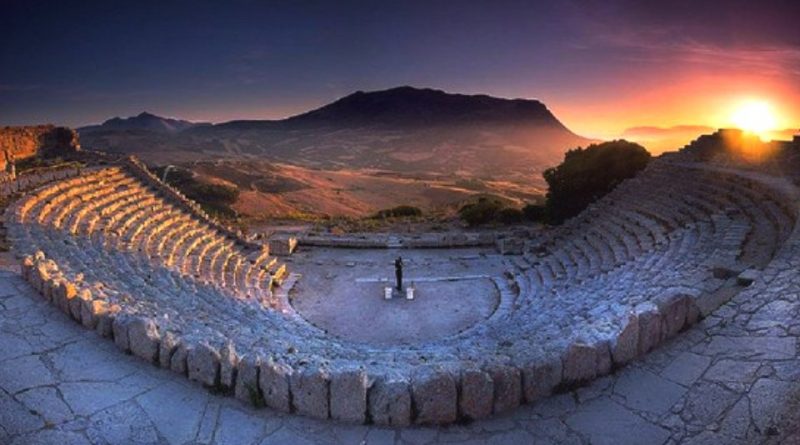The Elimi and agriculture
The Elimi and agriculture
The Elimi are an ancient people of Sicily, settled in the western part of the island, probably derived from the meeting of native populations with others of Aegean origin and with Ligurian groups. The term Elimi, seems to derive from Ilion (Troia). The hypothesis on the origins of the Elimi, however, are controversial and today the most accredited are three: the Italic hypothesis, the Ligurian hypothesis and the Trojan hypothesis.
According to Ellanico the Elimi were a population of Italic origin, arrived in Sicily after fighting a war with the Enotri. Also for the Greek historian, the Elimi also contributed to the formation of the Sicilians.
Philistus of Syracuse reports the presence of a people of Ligurian origin, although not identifying it with the Elimi. In modern times, historians such as Heinrich Nissen and Karl Julius Beloch investigated the possibilities of a Ligurian origin following the numerous epigraphic and toponymic references, still found in the cities of Lerici, Segesta and Entella (in the area of Contessa Entellina).
According to the Trojan hypothesis, the ancient name Elima recalls the period in which the Greeks destroyed Troy 1184 BC, the city of Asia Minor. Prince Elimo together with Aceste and other companions took to the sea to find safety in Sicily and stopped in the Crimiso region. Aeneas, their friend, who left Troy with twenty ships and over three thousand men, landed in Trapani; By chance, Enea found Elimo and since there were no hopes of returning home, he built two cities that took Elima and Egesta from the name of Elimo and Egesto, his companions. Egesta would be the current Segesta; Elima rose on the mountain where he had found Elimo’s companions. The region was called Elimica and the people who settled there took the name of Elimi.
Another famous city was Solunto, of which today is the archaeological site, while the city most famous is definitely Erice; but let’s not forget Salemi (Halyciae), San Giuseppe Jato (Iaitas) and Nakone, whose location could be in the Valle del Belice. However, the most important city for the Elimi was Segesta which, in fact, served as the political and administrative center of their territory. It was in continuous dispute with the Greek polis of Selinunte and in general with the populations of Greek origin (defeated Selinunte in 580 BC). Nevertheless, from the archaeological excavations there is a strong Hellenic cultural influence in Segesta. A Doric temple and a theater of Greek origin have been found at the top of Monte Barbaro. The emporium of the city was located with the port of Castellammare del Golfo.
The Elimi were not a bellicose population but devoted themselves mainly to sheep farming and agriculture. It seems in fact that from their establishment the main economy of the Elimi was pastoralism and agriculture and that this also allowed trade and good relations with the Phoenicians who were good traders; in fact the Elimi had excellent relations with the numerous Phoenician emporiums located throughout Sicily and especially with the city of Mozia. The news on agricultural activities, as usual, comes from the discovery of artifacts, vessels for the conservation and processing of agro-silvo-pastoral products.
In this sense there is a continuity with the Sicilian arts and traditions. All the archaeological discoveries show that the elimi, as well as the Sicilians, did not drive out and destroyed the previous Sicilian culture (Thapsos civilization) that occupied the whole of Sicily from east to west, but rather merged to it by importing new decorative elements, such as they show, for example, the findings of the various ceramic fragments found in the “Vanella cave landfill” at Segesta. In fact from the artistic point of view there is a certain continuity and resemblance throughout the island. The Sicans were then absorbed and merged with the Italics, even if their own culture lasted longer in Pantalica, in eastern Sicily, and in Sant ‘Angelo Muxaro (last Sicaro stronghold). Thus the Elimi also inherited knowledge and techniques and would contribute, according to the most accredited thesis (through linguistic studies), also to the formation of the Sicilian people.
Most probably their peaceful settlement gave a particular impetus to agriculture and pastoralism, and this represented that framework of slow general transformation that affected the central Mediterranean region, namely the rise of peasant communities that still used stone tools manufactured with much more advanced techniques. , but who knew the new arts of agriculture, livestock breeding and ceramics.
The news of this civilization of course is still vague and few finds that can connect their agricultural activities and pastoralism but the puzzle built through different fragments of various provenance seems to prove that the Elimi was the ancestor civilization of the “modern” Sicilian agriculture.

